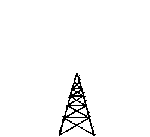

The Maryland Slow Net (MSN) is a traffic and training net; sponsored by the Anne Arundel Radio Club (AARC). Net operating speed (CW) is about ten words per minute. MSN is a section net and is a member of the National Traffic System (NTS). MSN meets daily at 7:30 PM prevailing Eastern Time on 3563 KHZ. All are welcome.
TO SIGN INTO THE NET: Wait until the net control station (NCS) calls the net or finishes signing in another station. Then send a single letter as a temporary identifier. When NCS repeats the letter you sent, then sign in and indicate whether or not you have traffic, and if yes, itís destination.
EXAMPLES:Often several stations try to check in simultaneously. If NCS recognizes another station wait until NCS signs in the other station or until he calls the net again. Then repeat the procedure and try again.
ONCE YOU ARE SIGNED INTO THE NET; The NCS will assume that you are standing by attentively. Normally you do not transmit unless he calls you. He may use your entire call or only your suffix (e.g. "JJB"). If NCS calls you and pauses, indicate your attention by sending "HR". Unless your departure is unavoidable, you remain in the net until NCS excuses you by calling you and sending QNX, or closes the net by sending the letters "QNF". If you wish to address NCS, wait for a call of the net or a pause in the proceedings, and then send your call suffix. NCS will acknowledge with your suffix and then you can, for example, ask to be excused. Do not call any other net member unless directed by NCS. Keep all exchanges on the net brief.
To pass your traffic on if another station has traffic for you, NCS will usually send you off the net frequency, thus: KA3JJB KC3Y UP 4 ANNAPOLIS 1. Each station should then send G (going) to indicate you understood. You will then QSY up 4 KHZ and the station receiving traffic will establish contact with the sending station, When the receiving station is ready (QRV) the message is sent. The receiving station then acknowledges receipt by sending "QSL". After this, both stations promptly return to net frequency, and indicate their return to NCS by sending their call suffix.
All of these procedures are well covered in the messages of the MSN course. There is the farther benefit of a very appreciable increase in code speed experienced by most stations taking the course and checking in regularly.